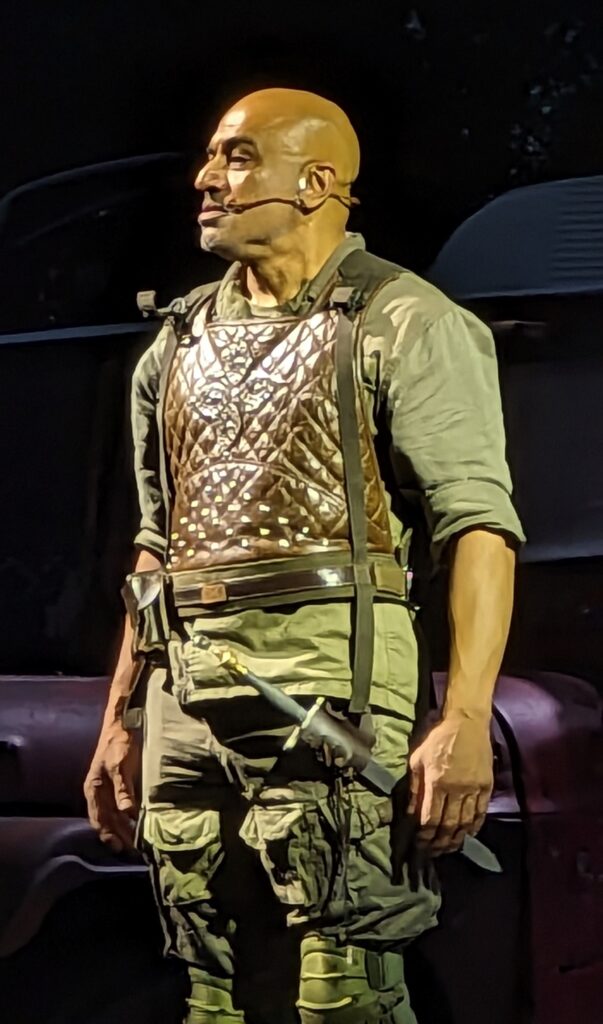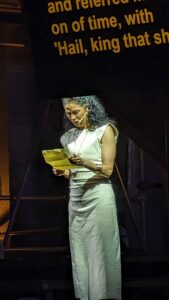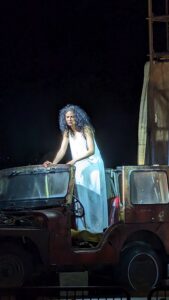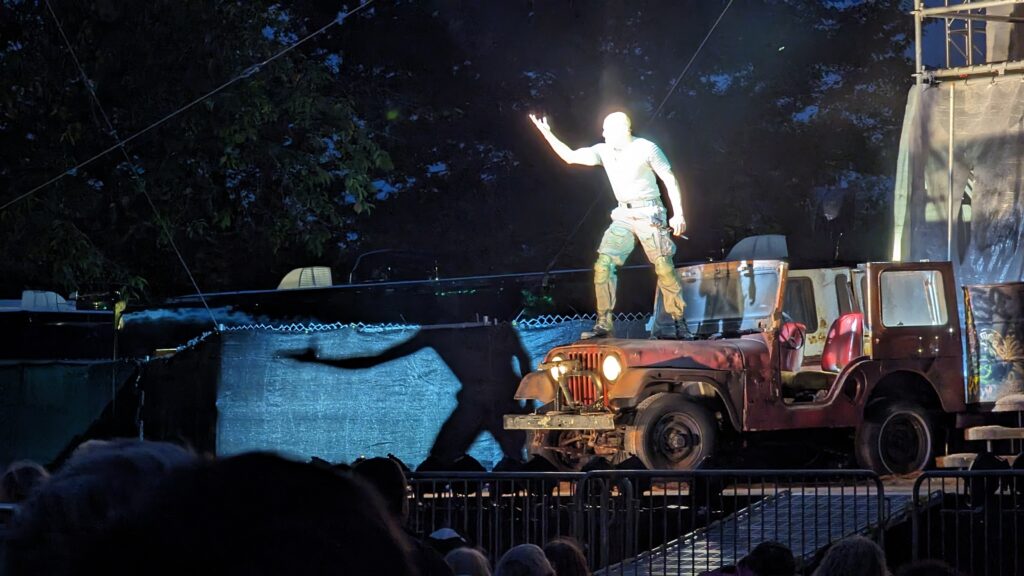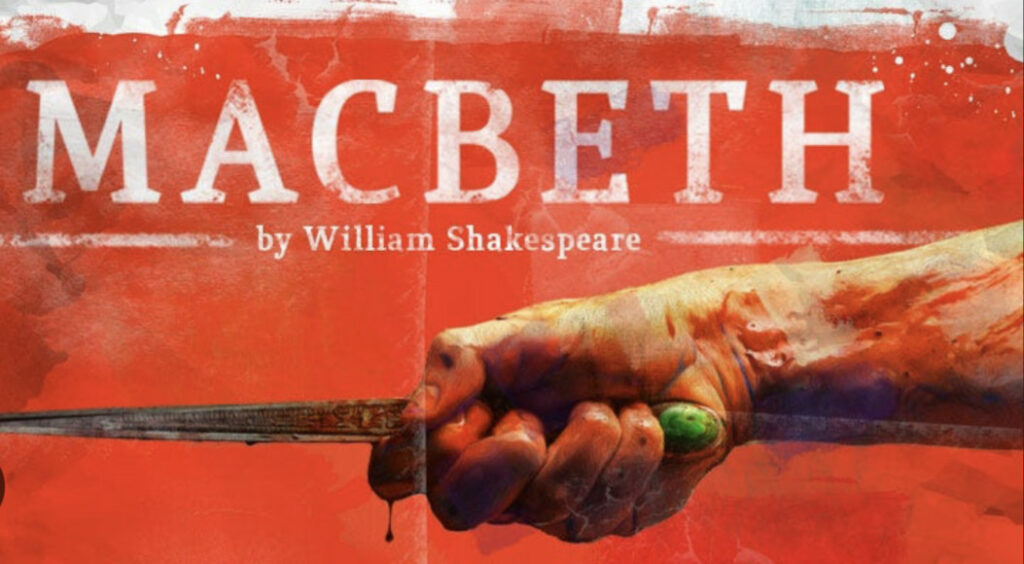
Hello! It is so cool for me to be writing for my dad’s blog after reading stories about me as a young kid reciting Shakespeare and the fact that I named my dolls Goneril and Regan before I had even read King Lear. There is something so full circle about this, and I’m so excited.
I’m in college, studying English with a Creative Writing concentration and Journalism. Unfortunately, I have no plans to be a Shakespeare academic (right now). I’m actually leaning more toward the journalism path. But of course, when I saw a Shakespeare class offered, I knew I had to take it. Learning Shakespeare again in college has been so fascinating as someone who grew up with Shakespeare. I have so many thoughts now that I’m old enough to have a deeper understanding of the plays.
My college offers two Shakespeare classes, one from the beginning portion of his life, focusing on comedies, and another on the second half of his life, focusing on tragedies. The tragedies course was the only one offered this semester, so I signed up. So far, we’ve read Macbeth, Hamlet, Romeo and Juliet, and Othello. Currently, we’re reading King Lear, and we still have Antony and Cleopatra and, finally, Pericles.
I had read the first three before the course, which made rereading them at a college level interesting. I didn’t have to focus on understanding the plot at first because I already knew the summary of these plays. That’s why when I read Othello, I interpreted it a lot slower because I wasn’t as familiar with the characters and story the way I knew Hamlet and Romeo and Juliet from the heart. Not that I didn’t love Othello, but it’s much easier to take away specific details when you know the basic summary of the story by heart.
The most significant discovery from this class was how much I love Macbeth. If you were to ask me my thoughts on Macbeth pre-college, I wouldn’t have thought much about it. To me, Macbeth and Hamlet were very interchangeable, and I would have preferred to discuss Much Ado About Nothing or As You Like It. I think I was more familiar with comedies because while my dad always taught me about tragedies, it’s hard to teach a little kid a story about a guy who wants to kill his uncle for revenge compared to a guy who turns into a donkey.
My new love for Macbeth came from my class’s in-depth analysis of Lady Macbeth and gender. Reading Macbeth in high school, the complexity of Lady Macbeth never crossed my mind. But when I sat down and read her monologue, I was blown away. When she said, “Come, you spirits that tend on mortal thoughts, unsex me here,” I knew that this character was different than any character I had ever read. Most of Shakespeare’s women I had read were very restricted by the gender norms of the time. Now that I’m thinking out loud, most of the comedies I read are heavily romance-driven. This was one of the first plays I had read that not only had zero romance but also a female character who took on the male characteristics of the time.
This led to me being fascinated with how exactly Shakespeare can challenge gender roles in some of his plays while also reinforcing them in others. I would say Taming of the Shrew is a pretty blatant example of him enforcing the rules, but most of the tragedies I’ve read break away from the gender rules. Except Ophelia, that I know of. I wrote my first paper for the course about the irony of Shakespeare’s strong female characters being in the tragedies, almost symbolizing that women who defy what society expects from them will meet tragic demise.
In my essay, I wrote about how women at the time were associated with Eve for being manipulative and needing a man to control them so they would not cause harm. I took this to explain why Lady Macbeth is villanized by most readers, rather than being a woman who knew what she wanted but was frustrated by the limits of her gender. Growing up reading Macbeth, I fell victim to this, and I thought she was the story’s villain. And while I obviously think murder makes someone a wrong person, I have a better understanding of why she wanted to kill Duncan so severely. I used to think she was crazy for wanting to kill Duncan so badly, but she is such a complex character.
Frankly, her character makes me sad. She isn’t afraid to face the challenges her gender presents her. Still, in the end, she falls victim to her biological gender (Though I do have questions about this, I think this was Shakespeare’s intention). In my essay, I wrote,
“Lady Macbeth mentally recognized that she needed to take on male characteristics to get what she wanted, but this was not something she could maintain, as she died shortly after going mad, presumably by suicide. Shakespeare believes that the cruelty that Macbeth can maintain naturally as a man is not something Lady Macbeth can hold on to for a very long time.”
The idea that she was doomed from the beginning is frustrating. She felt guilty about the killing, and she wasn’t entirely inhumane. There are several cases where she expresses her worry for Macbeth, which shows that she isn’t sociopathic but does show emotions and regret.
In the other plays I’ve read so far, there have been women who strayed from the gender norms of the time, but I have yet to find a character who stands out to me the way Lady Macbeth has. The comparison between Emilia and Desdemona in Othello is probably a close second for me. They weren’t as intense with their gender defiance the way Lady Macbeth was, but the small moments throughout the play interested me. When Emilia announces that she believes women should be allowed to cheat on their husbands, I was kinda like…oh wow, that was not something I would ever expect a Shakespeare character to say. I found Desdemona frustrating, but the fact that she married Othello despite society being against interracial marriage I thought was interesting. Though if she actually loves Othello, that’s an entirely different question that I will try and figure out for my second essay on Othello.
This is a lot of writing, so I’ll cut it here. But I’ll continue to brain-dump my thoughts on relearning Shakespeare as a college student regularly!







